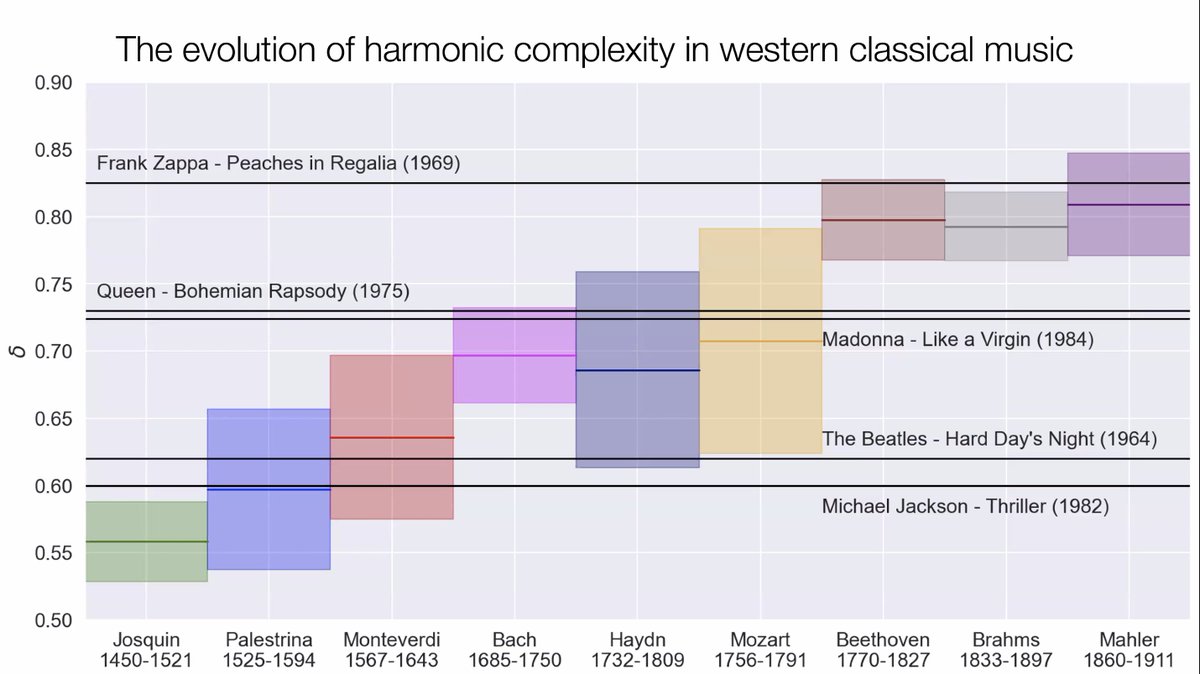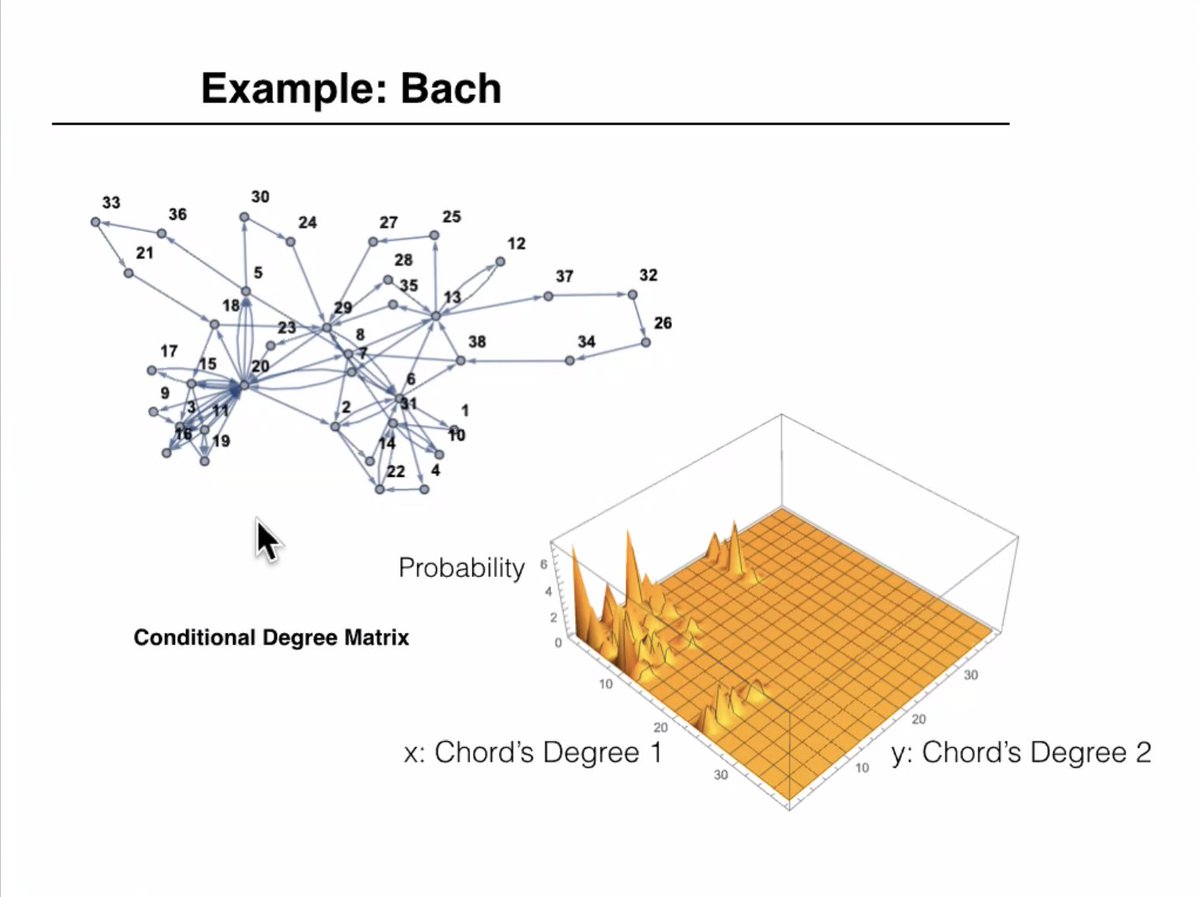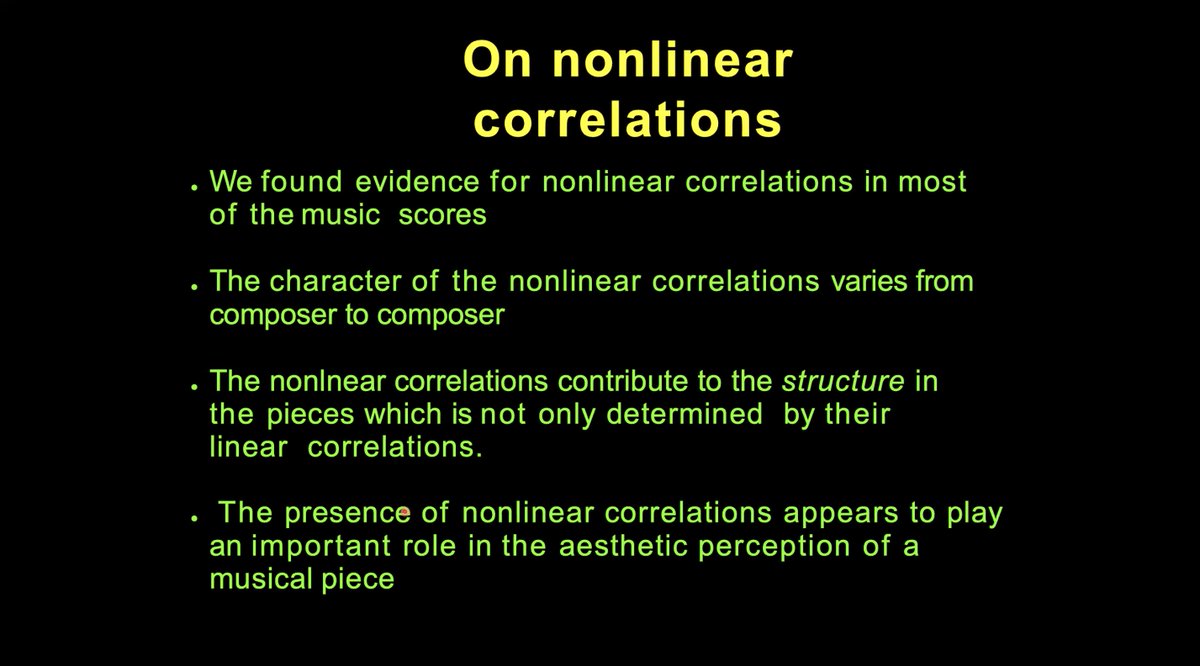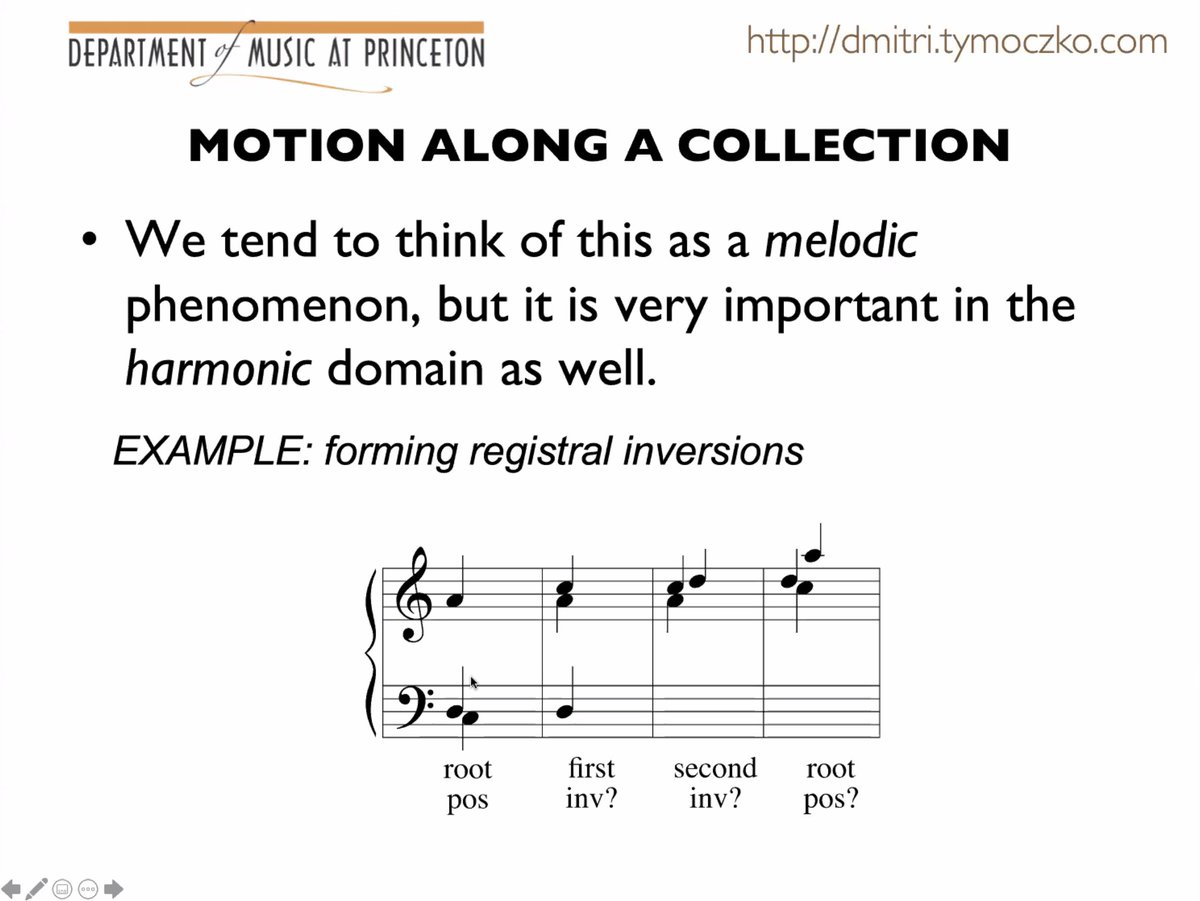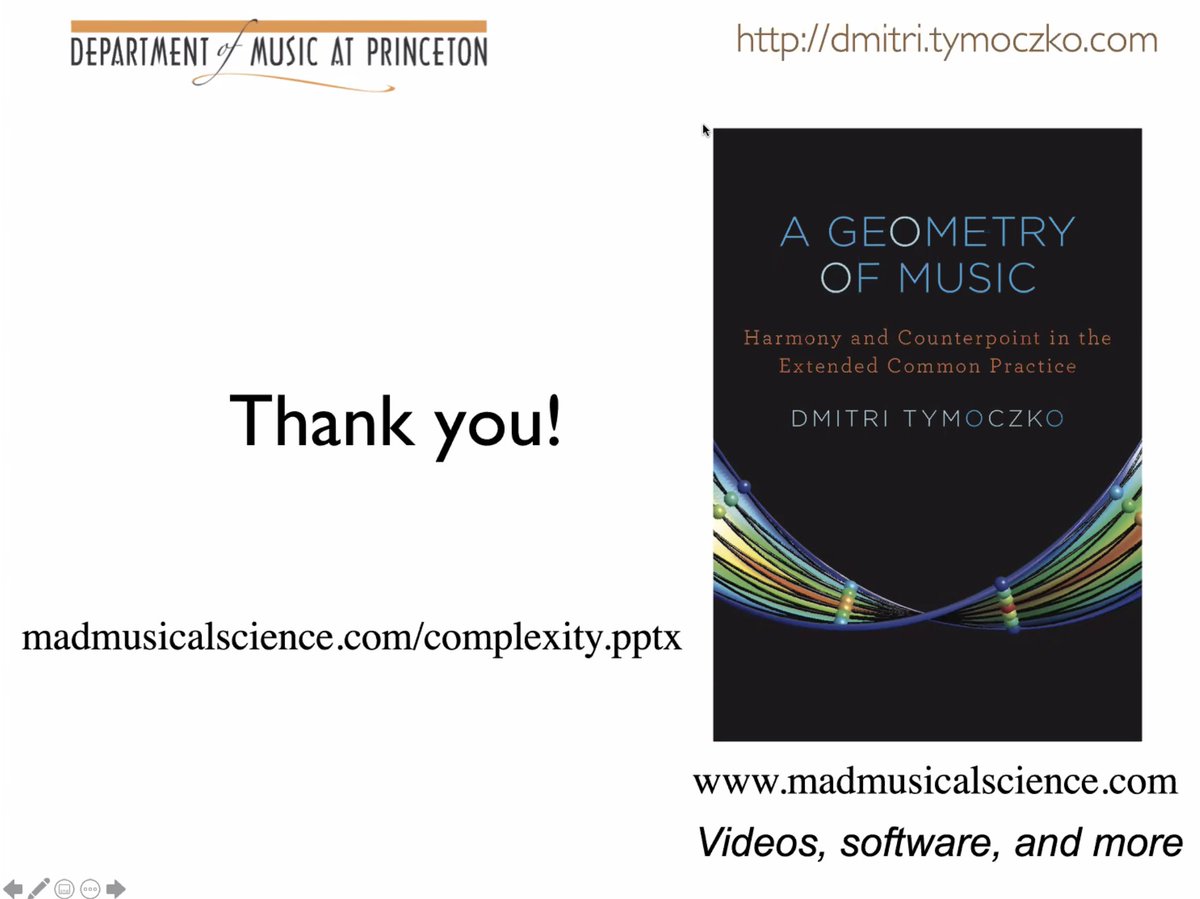This week at SFI: " #Complexity and the Structure of #Music: Universal Features and Evolutionary Perspectives Across Cultures", an #interdisciplinary working group assembled to explore new frameworks for understanding music. Stay tuned for highlights!
https://www.santafe.edu/events/complexity-and-structure-music-universal-features-
https://www.santafe.edu/events/complexity-and-structure-music-universal-features-
"Every pitch class set is connected to every other pitch class set."
– @mbnUNT, co-organizer of this week's #musicology working group, presents on how to understand the #topology of #harmonic structures in music with #network diagrams (e.g. Pic 4 with #JSBach's BWV 66):
– @mbnUNT, co-organizer of this week's #musicology working group, presents on how to understand the #topology of #harmonic structures in music with #network diagrams (e.g. Pic 4 with #JSBach's BWV 66):
Once you represent a musical composition as a network, it is possible to examine the evolutionary dynamics of its harmonic content over time, as explained by @mbnUNT in his opening talk for this week's SFI #musicology working group.
(Ironically, this #Beethoven is #scalefree:)
(Ironically, this #Beethoven is #scalefree:)
...which brings @mbnUNT to the "Chinese Postman" problem — what are the fewest possible steps required to navigate multilayer score #networks as Eulerian circuits?
And then → measuring Shannon #entropy and #scaling for quantitative measures of the complexity of #music:
And then → measuring Shannon #entropy and #scaling for quantitative measures of the complexity of #music:
"The tools for data analysis & network theory are available..."
- @mbnUNT on the toolkit for studying the network structures of musical harmony, allowing for quantitative comparisons of #FrankZappa & #Queen with #Haydn & #Mozart:
http://materialssoundmusic.com
http://musicntwrk.com
- @mbnUNT on the toolkit for studying the network structures of musical harmony, allowing for quantitative comparisons of #FrankZappa & #Queen with #Haydn & #Mozart:
http://materialssoundmusic.com
http://musicntwrk.com
Measuring #entropy and #disequilibrium in the harmonic structure of musical #networks, SFI External Prof @migfreb build on the work of @mbnUNT to compare musical dynamics to social revolution. "What is the probability of a given node of a given degree to be connected to another?"
Studying the arrow of #time in musical #narrative: Gustavo Martinez Mekler uses statistical analysis to differentiate #music from #noise by identifying aspects of temporal asymmetry in compositions. (What is the signature of #creativity in human activity, music or #science?)
What makes #music "pleasant" to listen to?
Gustavo Martinez Mekler on #nonlinearity in composition and the statistical properties correlated to the subjective experience of harmonic structure in #time.
As many have noted, #expectation and #surprise figure into this heavily:
Gustavo Martinez Mekler on #nonlinearity in composition and the statistical properties correlated to the subjective experience of harmonic structure in #time.
As many have noted, #expectation and #surprise figure into this heavily:
And we're back for day two of our virtual #musicology & #complexsystems working group & sharing what we can of these sessions!
1st up is Dmitri Tymoczko of @Princeton: "I'm going to speak in the language of music, instead of the language of statistics."
https://wiki.santafe.edu/index.php/Complexity_and_the_Structure_of_Music:_Universal_Features_and_Evolutionary_Perspectives_Across_Cultures_-_Agenda
1st up is Dmitri Tymoczko of @Princeton: "I'm going to speak in the language of music, instead of the language of statistics."
https://wiki.santafe.edu/index.php/Complexity_and_the_Structure_of_Music:_Universal_Features_and_Evolutionary_Perspectives_Across_Cultures_-_Agenda
"When you listen to a great composer, they are telling a story by manipulating patterns within this space..."
Dmitri Tymoczko of @Princeton gives a ripping tour of The Quadruple Hierarchy of movement in compositions:
#musicology #harmony #complexity
Dmitri Tymoczko of @Princeton gives a ripping tour of The Quadruple Hierarchy of movement in compositions:
#musicology #harmony #complexity
Using The Quadruple Hierarchy to analyze and automate compositions, Dmitri Tymoczko of @Princeton offers formalisms for understanding and exploring the structure of #music — recording available ASAP, but full slides from this presentation available at http://madmusicalscience.com/complexity.pptx

 Read on Twitter
Read on Twitter












